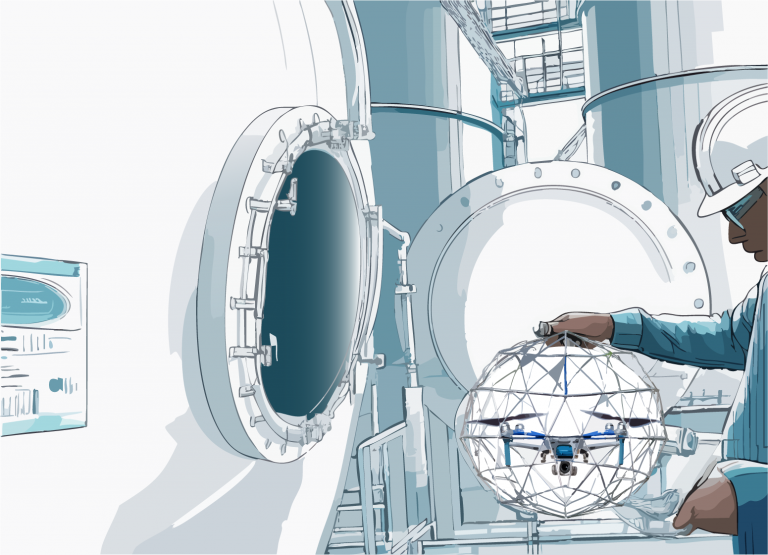For many European robotics startups, the dream of entering the U.S. market is as promising as it is daunting. The United States, with its massive appetite for automation, offers unprecedented opportunities, especially for companies that bring fresh, innovative solutions. But success in this competitive landscape requires more than just ambition—it demands strategy, adaptability, and a clear understanding of what customers truly need.
Recently, a European robotics company charted its path to the U.S. with a methodical, two-phase strategy aimed at capturing small and medium-sized enterprises (SMEs). The approach is both pragmatic and bold: start small, learn fast, and grow sustainably.
Why the U.S. Market is a Golden Opportunity
The U.S. industrial robotics sector is booming, valued at $9.21 billion in 2023, with a strong annual growth rate of 12.5%. The demand for automation is no longer confined to big players like the automotive giants; SMEs across sectors such as metal and machinery, electronics, and logistics are stepping up their investment in robotics.
For SMEs, the reasons are clear: labor shortages, rising operational costs, and the need to improve safety and efficiency. Automation has become a survival tool, not just a competitive advantage. Yet, many of these companies remain underserved by large robotics manufacturers who focus on big-ticket, high-volume contracts.
This gap presents a perfect opportunity for innovative, agile startups that can offer:
- Cost-effective robots that deliver value without the heavy price tag.
- Easy-to-use solutions that don’t require extensive technical training.
- Flexible systems that can adapt quickly to different tasks and workflows.
The European robotics company recognized this untapped potential and devised a strategy to deliver precisely what SMEs are looking for.
The Challenges of Breaking Into the U.S. Market
Entering the U.S. market isn’t without its challenges. Established competitors like FANUC, ABB, and KUKA dominate the landscape with deep brand recognition, expansive support networks, and decades of experience. For new entrants, earning the trust of American manufacturers is the first—and often hardest—step.
Beyond competition, there are regulatory hurdles to clear. Robots shipped to the U.S. must meet strict safety standards like UL certifications and OSHA compliance. Navigating these requirements can be complex and time-consuming. On top of that, setting up logistics—shipping, customs, after-sales support—requires careful planning and investment.
This is where the startup’s phased approach shines: by starting small with trusted local partners, the company avoids the upfront burden of building everything from scratch. Instead, it gains real market experience and gradually builds the infrastructure needed for long-term growth.
A Smart, Phased Strategy for Market Entry
The company’s approach is simple yet effective. In Phase 1, it focuses on partnering with U.S.-based distributors and system integrators who already have deep roots in the market. These partnerships provide a fast, low-risk way to introduce their products to American manufacturers. By working with established players, the startup can leverage existing relationships to reach customers quickly and efficiently.
In this phase, the company invests in creating tailored marketing campaigns, showcasing how their robotics solutions solve real-world challenges for SMEs. With a strong value proposition—affordable, easy-to-use, and adaptable robots—they aim to win trust, generate sales, and learn from early market feedback.
Once the groundwork is laid, the company moves to Phase 2: establishing its own U.S. presence. This means setting up a legal entity, hiring local talent for sales and technical support, and creating a physical footprint in key manufacturing regions like the Midwest or Texas. By then, the company will have validated demand, refined its strategy, and built the confidence to scale.
The transition is smooth and calculated: starting with partnerships to reduce risk, and gradually shifting to a full-fledged local operation to maximize control and growth.
What Makes this Approach Work?
At the heart of this strategy is the understanding that SMEs have different needs than large corporations. Unlike big companies that can afford to spend months on complex integrations, SMEs need solutions that are practical, fast, and cost-effective. This robotics company offers precisely that:
- Robots that are easy to deploy and program, even for those with limited technical experience.
- Systems designed for quick setup, allowing businesses to start seeing value within days, not weeks.
- Affordable pricing with a strong ROI, making automation accessible to companies of all sizes.
In addition, the company integrates cutting-edge technology like AI-driven reconfiguration and remote monitoring, enabling manufacturers to adapt quickly to changing production needs. This level of flexibility is a game-changer, especially for SMEs operating in fast-paced industries.
The Numbers Speak for Themselves
The financial outlook for this approach is promising. In the first year, working with distributors, the company projects revenues of $1.75 million, selling 50 robots at an average price of $50,000 each. Although the initial setup involves modest investments, it lays a strong foundation for growth.
By the second year, with a U.S. branch in place, revenues are expected to soar to $8.5 million, with 4xsales to 200 units. This demonstrates not only the potential of the U.S. market but also the scalability of the startup’s strategy.
A Lesson in Sustainable Growth
This European robotics company’s journey to the U.S. is a masterclass in smart, sustainable growth. By recognizing the unique challenges of the market and addressing them with a thoughtful, phased approach, they’re able to build trust, win customers, and scale operations—all while minimizing risk.
For SMEs in the U.S., this is an exciting development. It brings solutions that are designed with their needs in mind: robots that are affordable, flexible, and easy to use. For the robotics startup, it’s an opportunity to carve out a unique space in a competitive market and prove that innovation, combined with strategy, can open doors to incredible success.
For manufacturers looking to embrace automation, this is more than just a success story—it’s an invitation to explore solutions that can transform their operations. The future of robotics isn’t just about big machines for big corporations; it’s about empowering businesses of all sizes to work smarter, faster, and safer.





